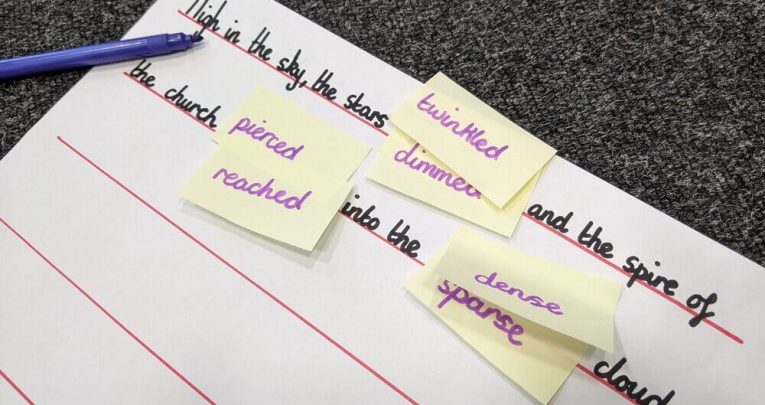Descriptive writing KS2 – word choice for reader impact

Investigate the power of language by building your own sticky-note mystery…

The author is the master manipulator, and clever, purposeful language choice is the most crucial tool in the writer’s craft.
As a Year 6 teacher, I know how children’s ability to manipulate language precisely and consciously is crucial to achieving greater depth in writing by the end of KS2.
However, it is essential for all writers to write as readers and to understand how their words affect the audience and purpose of their work.
While teaching a mystery story unit, I decided that we would focus on how we wanted to make the reader feel and how we could generate a suitable atmosphere simply through focussing on the words we used.
Choose a story
To begin, read a mysterious story opening, such as the brilliant Monstrous Devices by Damien Love, which beautifully weaves an ominous atmosphere.
This will help the children understand how an author creates a mood, the effect they want to have on the reader, and how certain words are carefully chosen to achieve this.
Describe a scene
Next, present the class with a large picture of a mysterious-looking house atop a hill. Try preparing a short description based on this picture, and focus on some words that could be altered to significantly change the atmosphere.
Write each of these words on sticky notes. Read through the description together as a class, discuss the effect on the reader and explicitly talk about how words such as ‘glared’ and ‘beckoned’ were able to deliver this feeling.
Sticky notes
Once you have read through this short description, remove some of the sticky notes to reveal alternative words underneath that fit in the sentences. As a class, you can then read through the description once more and discus how some of these new words affect the mood of the story.
Word games
In the final practise stage, you can get children to investigate a new short description that you prepare beforehand, containing more sticky notes with alternate words.
This time, ask pupils to use a variety of word mat and thesaurus resources to create their own alternate words. Swap and change them around with your original ones, while talking about how they want the reader to feel based on their language choices.
Write your own
Finally, allow everyone to read each other’s mysterious descriptions and ask questions such as, “Why did you use that word?”, “What image did you want to create?”, and “What words did you choose to not use and why?”.
Finally, ask the class to write their own short descriptions for a variety of mysterious pictures. Guide them towards active redrafting and keeping the reader in their mind at all times.
Christopher Mann is an experienced primary school teacher and lead writing moderator for KS2 in Greater Manchester. Follow him on Twitter @chrismann755











